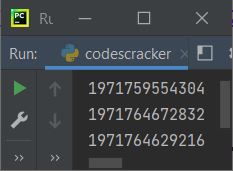- Python Built-in Functions
- Python All Built-in Functions
- Python print() Function
- Python input() Function
- Python int() Function
- Python float() Function
- Python len() Function
- Python range() Function
- Python str() Function
- Python ord() Function
- Python chr() Function
- Python ascii() Function
- Python pow() Function
- Python type() Function
- Python List Functions
- Python list() Function
- Python insert() Function
- Python append() Function
- Python extend() Function
- Python pop() Function
- Python remove() Function
- Python reverse() Function
- Python sort() Function
- Python sorted() Function
- Python Dictionary Functions
- Python dict() Function
- Python update() Function
- Python get() Function
- Python keys() Function
- Python setdefault() Function
- Python fromkeys() Function
- Python items() Function
- Python popitem() Function
- Python Tuple Function
- Python tuple() Function
- Python Set Functions
- Python set() Function
- Python frozenset() Function
- Python String Functions
- Python split() Function
- Python join() Function
- Python format() Function
- Python replace() Function
- Python Iterator Functions
- Python iter() Function
- Python min() Function
- Python max() Function
- Python sum() Function
- Python count() Function
- Python index() Function
- Python copy() Function
- Python clear() Function
- Python next() Function
- Python filter() Function
- Python enumerate() Function
- Python zip() Function
- Python reversed() Function
- Python Number Functions
- Python abs() Function
- Python bin() Function
- Python oct() Function
- Python hex() Function
- Python round() Function
- Python divmod() Function
- Python complex() Function
- Python File Handling Functions
- Python open() Function
- Python read() Function
- Python readable() Function
- Python readline() Function
- Python readlines() Function
- Python write() Function
- Python writable() Function
- Python writelines() Function
- Python close() Function
- Python seek() Function
- Python tell() Function
- Python flush() Function
- Python fileno() Function
- Python truncate() Function
- Python Class Functions
- Python object() Function
- Python property() Function
- Python getattr() Function
- Python setattr() Function
- Python hasattr() Function
- Python delattr() Function
- Python classmethod() Function
- Python staticmethod() Function
- Python issubclass() Function
- Python super() Function
- Python Misc Functions
- Python all() Function
- Python any() Function
- Python isatty() Function
- Python bool() Function
- Python callable() Function
- Python globals() Function
- Python locals() Function
- Python dir() Function
- Python id() Function
- Python isinstance() Function
- Python map() Function
- Python repr() Function
- Python slice() Function
- Python vars() Function
- Python Advance Functions
- Python help() Function
- Python hash() Function
- Python breakpoint() Function
- Python bytes() Function
- Python bytearray() Function
- Python memoryview() Function
- Python compile() Function
- Python eval() Function
- Python exec() Function
- Python Tutorial
- Python Tutorial
- Python Examples
- Python Examples
Python id() function
The id() function in Python returns a unique id for any specified object. For example:
a = [12, 42, 5, 5] b = (1, 43, 5) c = "Python Programming" print(id(a)) print(id(b)) print(id(c))
The snapshot given below shows the sample output produced by the above Python program, demonstrating the id() function:

Note: Every object in Python gets assigned its own unique id when it is created. Therefore, you'll get a different ID for the same object each time you run the program.
Python id() function syntax
The syntax of the id() function in Python is:
id(obj)
where obj refers to an object such as a list, string, tuple, class, etc.
Python id() function example
Here is an example of the id() function in Python.
num = 100 a = 100 print(id(100)) print(id(num)) print(id(a))
All three print() statements print the same output, which looks like this:
2245638378960 2245638378960 2245638378960
This is because the id of a particular one remains constant during the lifetime of a program.
Advantages of the id() function in Python
- Python's id() function generates a unique identifier for each object, making it useful for object identification and comparison.
- It can be used to determine if two variables refer to the same object, which can be crucial in certain programming scenarios.
- By comparing an object's current identifier with its previous identifier, the id() function can determine whether an object has been modified or reassigned.
Disadvantages of the id() function in Python
- The id() function returns an integer that is meaningless to the user and may be difficult to interpret without additional context.
- The unique identifier returned by id() is implementation-dependent and may differ between Python versions or Python interpreter implementations.
- Because it must generate a unique identifier for each object, the id() function may be computationally expensive for large or complex objects.
« Previous Function Next Function »